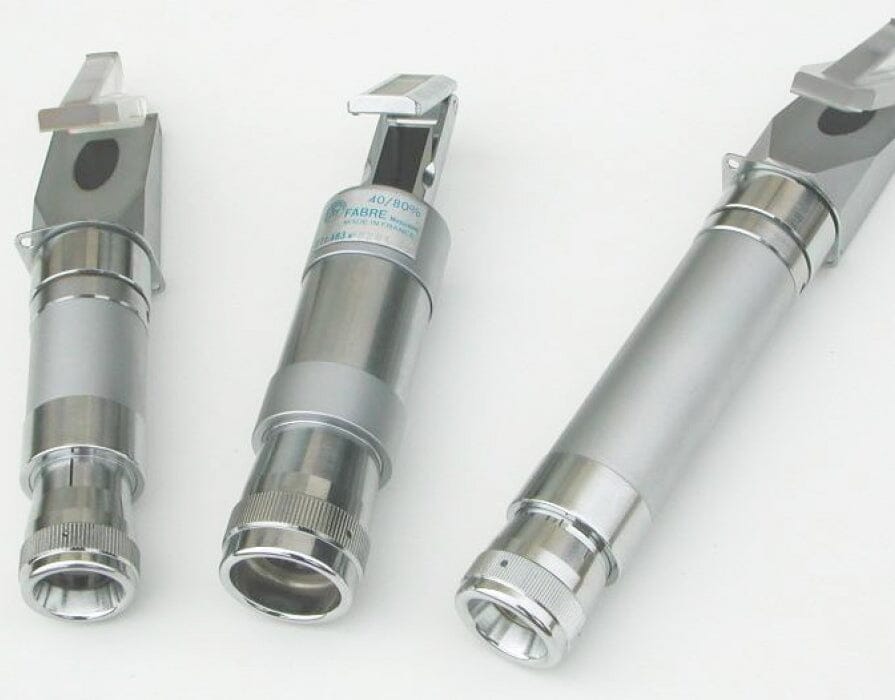The refractive index of a body is the ratio of the speeds of light through air and through that body. This nD index depends on the chemical constitution of the product to be analyzed, and varies according to various factors: concentration of soluble solids, sucrose, etc. . .
Job
- The sample must be homogeneous and cover the entire surface of the prism. If necessary, mash the fruit in the syrup; for a pasty sample, filter the product through cheesecloth, ignoring the first drops, the index of which could be altered.
- Tilt the lighting shutter, place a few drops of the product to be measured on prism 2, then carefully close the shutter.
- Point the device towards the light, put your eye in the eyepiece, unscrew it then screw it back on until the measurement scale appears clearly. The appearance of the field is then that of figure 2.
- Wait for temperature equilibrium; the device being calibrated for 20° C (28° C for tropical countries).
- Read the graduation corresponding to the dividing line between the light area and the dark area. The right scale indicates the water content of honey, the left scale indicates the content of pure sucrose in 100 g of solution for sweet products other than honey.
- If the ambient temperature is different from 20°C or 28°C consult the attached tables.
- After each series of measurements, it is recommended to clean the prism and the lighting shutter with lukewarm water and then wipe them with a soft, lint-free cloth.
- The refractometer does not require any maintenance but it must be kept in its case or box, away from acid or corrosive vapours.
- A glass calibration slide can be used by placing it on the prism of the refractometer after interposing a drop of monobromonaphthalene between the slide and the prism. It is then sufficient to properly orient the device in front of a light source (lighting lamp or daylight), the number read on the scale of the refractometer having to correspond to that engraved on the calibration plate.

